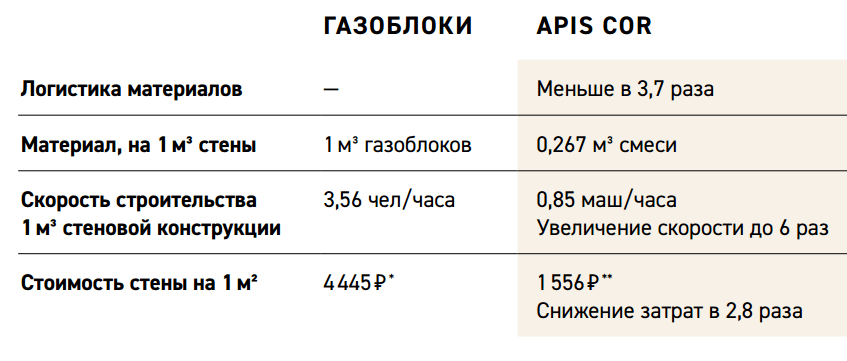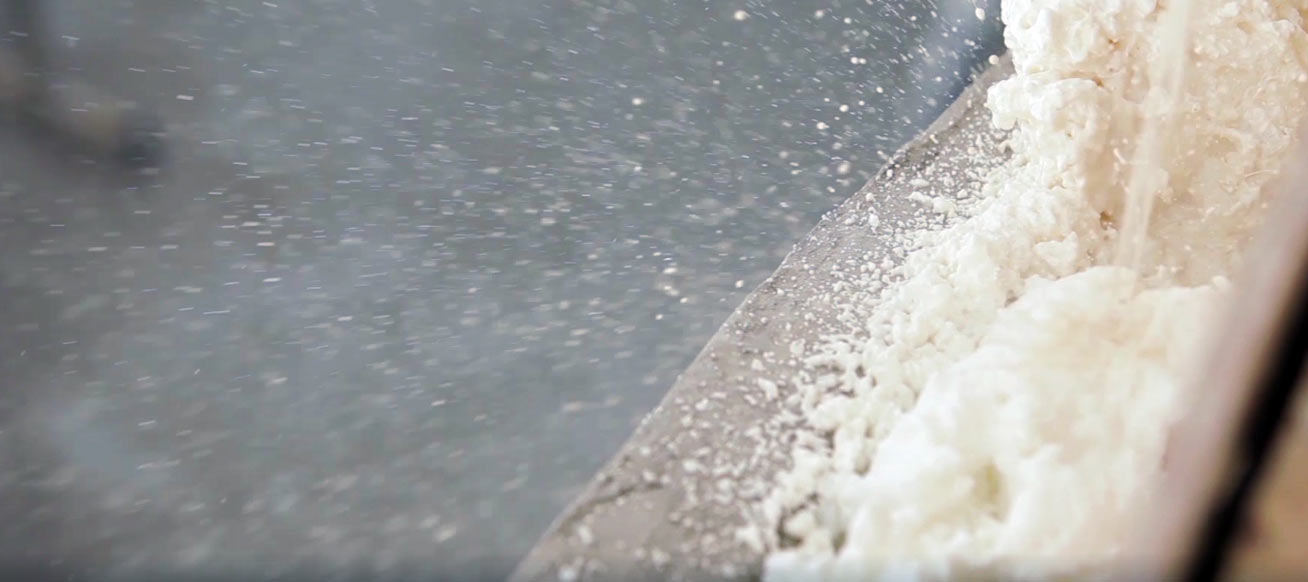More than 70 years ago in the United States created the first machine for rapid (24 hours) fill the houses of concrete, which was designed by the engineering genius of Robert Gilmour LeTourneau. In General, the idea of Thomas Edison more than 100 years (patent pending). Over the decades, the printing technology of concrete has changed, began to use full-fledged 3D printing on individual projects. Now these houses look much nicer. For example, in February 2017, the building was printed in the suburban Stupino in the construction printer Apis Cor. This is the first house in Russia, printed whole, not assembled from printed panels.
The building area of 38 m2. The total cost of construction “turnkey”, including the Foundation, walls, floors, roofs, wiring, doors and Windows, exterior and interior, amounted to RUB 593 568,19 (detailed estimates), but this is without the cost of works of some specialists.
The printer is quite mobile. Loader brings it into the body, and sets on a prepared Foundation at the construction site.
The printer is connected by hose to a large mixer, there is an automatic system of mixing and feeding the mixture. It looks like this.
Then begin work. All work on the construction of the house took in Stupino about two months. The project began in December of 2016, finished in February 2017. The advertised 24 hours is just pure machine time of the printer Apis Cor. It included at various stages to print self-supporting walls, partitions and building envelope.
The device has an interesting design. It is located on a movable bracket in the center and prints around himself, gradually rising. After printing is complete, the wall structures are extracted by a crane and he continues to work outside.
The device itself in the process consumes 8 kW, so you need to provide it with electricity at the time of construction.
The cost of printing a house out of concrete is cheaper than the construction of the usual “boxes” of the units.
In addition, such houses lots of additional advantages, making them truly unique.
1. An almost arbitrary form of the walls. Rounded wall with any angle. Here is the perfect precision of construction, a drunk Mason sure can’t fuck up. The printer has a built-in automatic alignment on the horizon and stabilization system.
2. Wall immediately after processing, ready for painting decorative plaster. You can roll the material in one day and paint the house in random colors, and then repaint in the mood at any time. Does not require plastering with level indicators. There is an additional reduction in the cost of finishing works. This applies to both internal and external decoration.
3. The form of walls, size and location of Windows you can perfectly plan taking into account the surrounding landscape and light. By the way, there is an assumption that the walls on one side can be a little tilted to further increase the illumination. However, design fantasy is limited to the available forms of glass, because there will not be ordinary glass, you need to put double glazing to keep warm in the winter.
Of the downsides that come to mind include the flat roof.
It is clear that the developer guarantees: roofing effectively withstand high snow and maintenance loads. But it seems that such a roof can accumulate stagnant water with all the consequences (or rather, not its consequences). To avoid this happening, the roof uses a special tapered PIR insulation Slope — ready designer to create the desired slopes and counter-slopes. They say that rainfall will be effectively discharged from the surface of the roof, but still unusual.
How will the insulation between the inner and outer walls also interesting to check out. Now the developer is experimenting with two sposobami insulation: loose-fill crumb Logicpir on one side of the house (teploprovodnosti 0,022 W/m*K) and the filler of the polyurethane composition to another (0.023-0,025 W/m*K). The insulation was carried out simultaneously with the print designs, which greatly increased the construction time.
Well, the small size of the house not everyone will like it — after all, not everyone is willing to live in a Studio apartment, small Studio. Although this option is 38 m2 and it is come to life a lonely man. Besides, as mentioned, the technology allows to build houses and larger.
Yes, and round the house the TV will have to buy concave, if you want to play computer games on the big screen.
According to this technology, you can print and three-story houses, but they will cost much more than $10 thousand.
Other drawbacks — limitations on dates of construction. The use of concrete mixture to be used as “ink” is only possible at temperature from 5C above zero. So if you don’t want to put the awning with the heater — the building in the winter impossible. In the future promise that the printer will learn to work with geopolymer concrete from natural ingredients — this material can be printed at lower temperatures. Moreover, it is superior to normal concrete according to different parameters.
In the end, the house is definitely not the place to install the boiler or other heating system. Probably the only option for life in winter — electric heating.
Estimates of the first house left in the area of $10 000, though the estimate takes into account work are not all professionals. The estimate is the installation of window and door frames, decoration of walls, painting of the facade, installation of drainage, waterproofing, thermal insulation, but other works are not taken into account. Probably these works are the house “turnkey” will be released in two times more expensive that is about $20 000.
Foundation – 14 819 RUB
Walls – 95 629,64 RUB
Floors, roofs – 144 267,55 RUB
Wiring – 12 650 rubles
Doors and Windows – 211 052 RUB
Exterior finish – 46 250 rubles
Interior trim – 68 900 RUB
But the contractor notes that this demonstration project were used expensive materials. If you use cheaper materials, the cost will drop to about $8100.
The sponsors of the company PIK and Apis Cor note that this demonstration house on the site Stupinskiy aerated concrete plant — Russia’s first residential building, printed entirely on the printer.



























